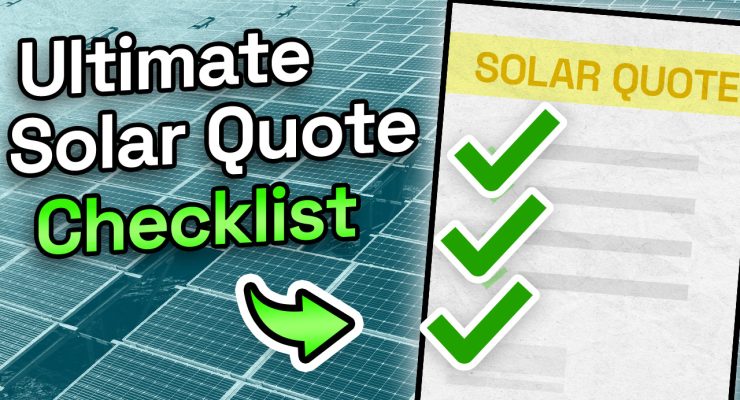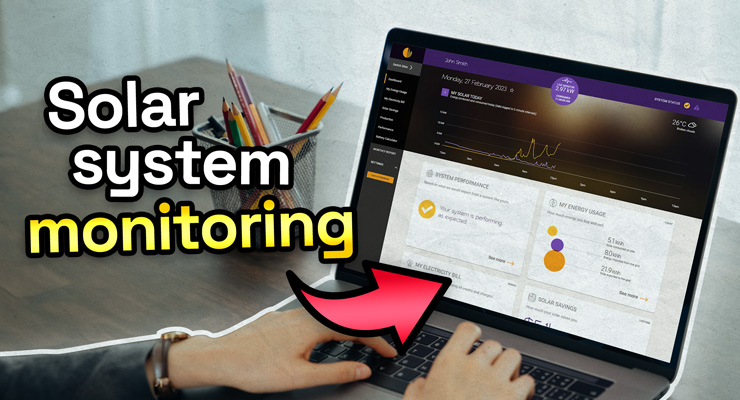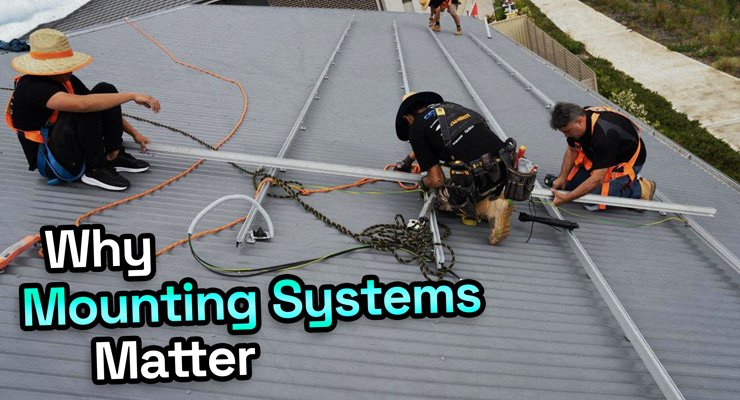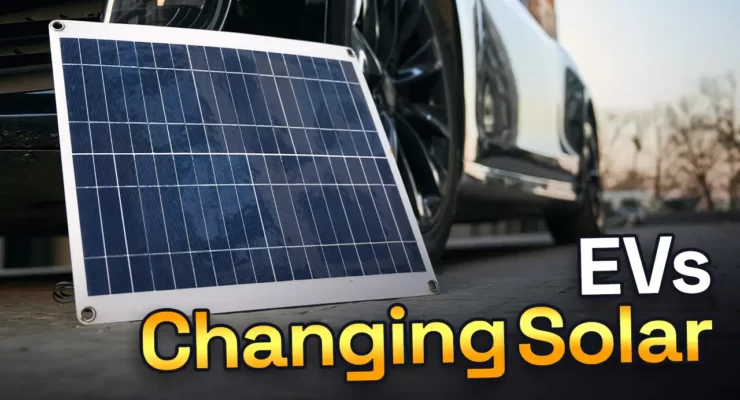
Fast read
When comparing solar quotes, it is important to ensure that you are comparing "apples with apples". This means ensuring all quotes have removed the rebate and include the correct GST application.
Check that the meter connection and any additional expenses are included in the quote and compare the warranties and after-sales service offered by different companies. We recommended choosing a local, reputable company with a track record of at least ten years in the industry.
Ensure you also get references from previous customers and check the company's accreditations and certifications.
Before accepting a solar quote
Often the better companies delivering better long-term quality will show a higher price because they do the job correctly. But, unfortunately, they also often include all the relevant costs in the solar quote, while the more shonky operators might deliver a lower price, and later you realise they pulled a few tricks.
To avoid you falling for these tricks, I’ve created a list of the key issues to check out when comparing solar quotes.

1. Make sure you compare apples with apples when looking at the solar quotes
Checking the final price of the solar quote is important. More specifically – did the solar quote already include the rebate taken off? For example, in many cases, if somebody says your solar system is $6,000, the price is more like $8,000, and they have already taken the rebate off to make the price look as low as possible. This is a fair method as the lower price is the price you will pay, and the solar installers usually look after the STC rebate aspects.
So don’t think I got a quote for $6,500, and I will get an additional $2,500 off because of the rebate. So it’s most likely that the solar rebate has already been taken off. However, if the solar quote does not make it clear, then it is worthwhile to ask.
So hint 1 – ensure all solar quotes have taken the rebate off, and therefore, you compare all the net prices.
2. Is the GST applied correctly?
One way to spot companies if they have misapplied the GST is to reduce the PV system price “illegally”.
a) Correct rebate and GST application sample:
$10,000 (Price of the solar system before rebate & GST)
+ $ 1,000 ( plus GST – 10%)
$11,000 (Total price before rebate)
Minus $ 3,000 (STV Gov Rebate)
$8,000 (Customer out-of-pocket price)
b) Incorrect GST application – usually undertaken by less quality-focused companies to beat competitors:
$10,000 (Price of the solar power system before rebate & GST)
Minus $ 3,000 (STV Gov Rebate)
$ 7,000 (Sub-total- when GST incorrectly applied)
Plus $ 700 ( plus GST – 10%)
$7,700 (Customer out-of-pocket price – and Government ripped off by $300)
You might say, who cares? The problem arises when companies incorrectly apply GST, which is a dead giveaway, indicating their intention to vanish before the ATO catches on.
When the Australian Taxation Office realised there were abrupt changes, this company had already closed the door, liquidated, or gone bankrupt. So go with the company that does the right thing regarding GST, as they are more interested in the long-term survival of their business than the quick buck.
3. Meter connection
Make sure all solar quotes incorporate the meter connection. In states where the installer isn’t responsible for the meter connection, ensure that all other meter work, such as upgrading to meet the latest standards, is included. If one installer has the meter work included as part of the solar quote and the other has left it off to surprise you after you gave the go-ahead, I know who I would go for – the honest bloke.
If one installer has the meter work included as part of the solar quote and the other has left it off to unexpectedly reveal it after you gave the go-ahead. I know who I would go for – the honest bloke.
You want to ensure that the company that sells you the solar system and installs the solar system also organises and manages or even undertakes the meter connection. Hence, your system delivers savings from day 1. Of course, the rules differ in different states, but overall, please ask how the meter connection will work.
4. Extra expenses
Potentially the most important question is: Is there any out-of-pocket expense that I would expect to come towards me other than this solar quote? If yes, determine how much it is because you can compare apples with apples if another installer has included it all and another has not.
5. Warranty of the solar quote
If you have two solar quotes for what seems on paper to be the same system, with the same components and two different prices. You may be wondering what the difference is – other than the company margins. Ask the companies about the different warranties that you get.
One company might give you a three-year workmanship warranty (the warranty from the installation company that installed it – ensuring nothing falls off and all switches will work etc.). The competitor offers a seven-year workmanship warranty. If the company with the longer workmanship warranty is 300 dollars more expensive, they offer a better deal because 4 years of additional peace of mind for $300 is not bad.
Who do I contact if there is a problem?
I believe the responsible solar companies will tell you that you should be able to contact them directly – that is the correct answer. However, the companies who say to contact the component/product manufacturer will condemn you to a time-consuming runaround. They are also misleading you concerning Australian consumer law; as per law, the installer can be your 1st port of call.
The law says: If you have sold and installed it, you are responsible for looking after the system for the warranty period to assist the customer in any warranty matters or repairs. On the other hand, if the manufacturer has disappeared, then the warranty responsibility jumps onto the company that sold the system.
Now, if it’s not a warranty, you must expect to pay something for the call-out and repair it. But if it’s a warranty, in that case, the manufacturer should be paying the installer for their time. So please, as the company clarifies at the beginning, who will look after you if you have a warranty claim or repair request?
6. Deposit and payment
Check how much is the deposit. 10% is reasonable, however 15% to 20% is the maximum.
On the other side, you would also be expected to pay for the system in total on the day it is installed.
Do not suddenly expect your solar system to be installed and then be tardy on the way you pay for it. A lot of solar companies work on tight margins. Cash flow is essential.
If the meter work is still necessary, I’d withhold a portion of the payment until they’ve fixed the meter and then promptly pay the remaining amount.

7. What is the installation date?
What’s the installation timeline for the system? Companies might be eager to make a quick sale, but then you might realise after signing that there’s a three-month wait before your solar PV system gets installed because of their long line and bookings. So when you compare solar quotes, also consider the installation date.
At the time of accepting the solar quote, you should be provided with an overall installation date for the system. Gathering facts and negotiating now is crucial because once the deposit is handed over and the quote is accepted, your negotiating power diminishes.
8. If you go with finance, get all the facts and figures
Finance will become a bigger and bigger part of renewable energy purchases. In the past, customers might have purchased only a small solar system for a modest amount. Some customers today integrate hot water, battery, EV charging, insulation, and ventilation with heating and cooling as well as solar. Suddenly there is no change from $40,000 to $60,000. In such cases, finance is a regular part of the purchase.
9. Output generation estimate
Not every installation situation will produce the same amount of renewable electricity for the same size system, even if they are located in the same suburb. The angle of the roof, the directions of the panels, and, most importantly, the amount of shade on the roof will affect the final output of the system.
Ensure the installer has considered all these aspects when supplying you with an annual system output estimate. Your annual system output will determine your rate of return and how high your future electricity bills will be.
When comparing solar quotes, I recommend trusting the more conservative output estimate and giving that company a brownie point for not promising everything and delivering a bit less.
If this example or a situation similar applies to you, that needs to be reflected in the output generation estimate. Otherwise, your payback period calculations are incorrect. For example, if you expect to get $2,500 in savings in electricity bills a year, but your system only produces enough electricity to give you $1,500 in savings. This causes you to wait another year or two to recover your money.
Make sure you get a system output estimate in writing. You’ll also want to inquire about who will be responsible for explaining any significant discrepancies if the system generates considerably less than what you’ve been told it would.
So I insist you get an excellent and well-calculated output estimate, so you get an expectation of what your system will generate.
10. You have a cooling-off period in certain circumstances for solar quotes
If you had a solar salesperson knock on your door, hit you up in a shopping centre, or call you out of the blue and you purchase a solar system from them and then get second thoughts, you are lucky. The Australian consumer law gives you a 10-day cooling-off period in such circumstances. This means you can change your mind and cancel the sale at no cost.
Some solar agreements are not unsolicited consumer agreements and therefore do not attract the cooling-off period, such as:
- Sales that occur at party plan events, when the host makes it clear that you are invited to the party to be sold something and at least three people are invited.
- A sale made at a stall in a public area of a shopping centre is unlikely to be an ‘unsolicited consumer agreement’ when:
- The kiosk or stall is the operator’s business or trade premises
- The salesperson remains within the kiosk or stall.
In case your contract for the purchase of a solar system was accepted on the business’s sales premises, and it does not fall into the definition of an ‘unsolicited sale’. Then the terms of the contract will apply, as long as it does not breach other sections of the Australian consumer law.


